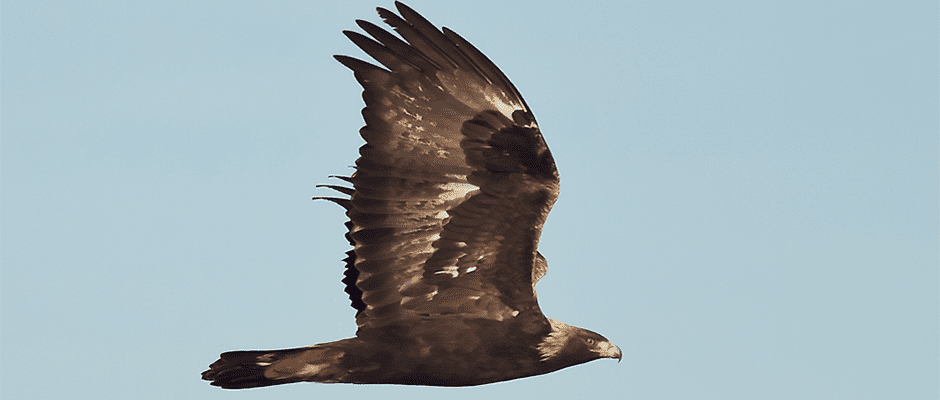Share this article
Older golden eagles migrate slower to reach breeding areas
Golden eagles (Aquila chrysaetos) can migrate up to 3,000 miles from wintering to nesting grounds, taking advantage of updrafts to make the journey easier. Conventional wisdom says that older, more experienced migratory birds travel more quickly than juveniles. However, recent research on golden eagles in eastern North America shows young birds fly faster than older ones.
Todd Katzner, a research wildlife biologist with the U.S. Geological Survey and co-author on the paper published in The Auk, set out to analyze golden eagles’ flight speed as part of a larger project to understand their movement to evaluate the risk they faced from wind turbines. Between 2007 and 2015, he and his colleagues captured over 80 eagles throughout their winter range in the central and southern Appalachians, from Alabama to New York. They put GPS tracking devices on the birds and followed their movement for time periods ranging from six months to four years.
“We could see where they were going, how quickly they were moving,” Katzner said. “This is cutting-edge technology. GPS data gives you accurate locations on the planet, and that’s useful to study animal movement.”
The units collected the birds’ location information and transmitted it over the mobile phone network every day, allowing researchers to calculate their flight speed.
“We were getting this counterintuitive answer where the younger birds were migrating faster,” said Katzner.
The reason, Katzner’s team discovered, was that juveniles were using upward currents of warm air called thermals to gain altitude and travel farther, faster and with minimal energy when temperatures rise in April and May. Older eagles, however, migrate as early as February, when the weather is colder and there are fewer thermals, to beat competitors to their breeding territories. This forces the birds to stick to less efficient air currents bouncing off the mountains, which slows them down.
“Experience doesn’t matter because the thing driving their migration is their desire to get north at a certain time, not their desire to minimize their energy expenditures,” Katzner said.
Although previous studies have explored the effect of age on migration, he said, they always studied movements over long time intervals and found that adults moved faster than younger birds. This is the first study to compare hourly and daily movement in golden eagles, which allowed the biologists to discover the unexpected difference in flight speed between adults and juveniles.
“This study gives us a lot of understanding about the drivers of migration of these birds,” he said. “If we want effective conservation, we need to understand their biology well.”
Header Image: An adult golden eagle with a GPS-GSM tracking device on its back begins its migration from the northern Appalachians to its Canadian nesting grounds. ©Michael Lanzone








